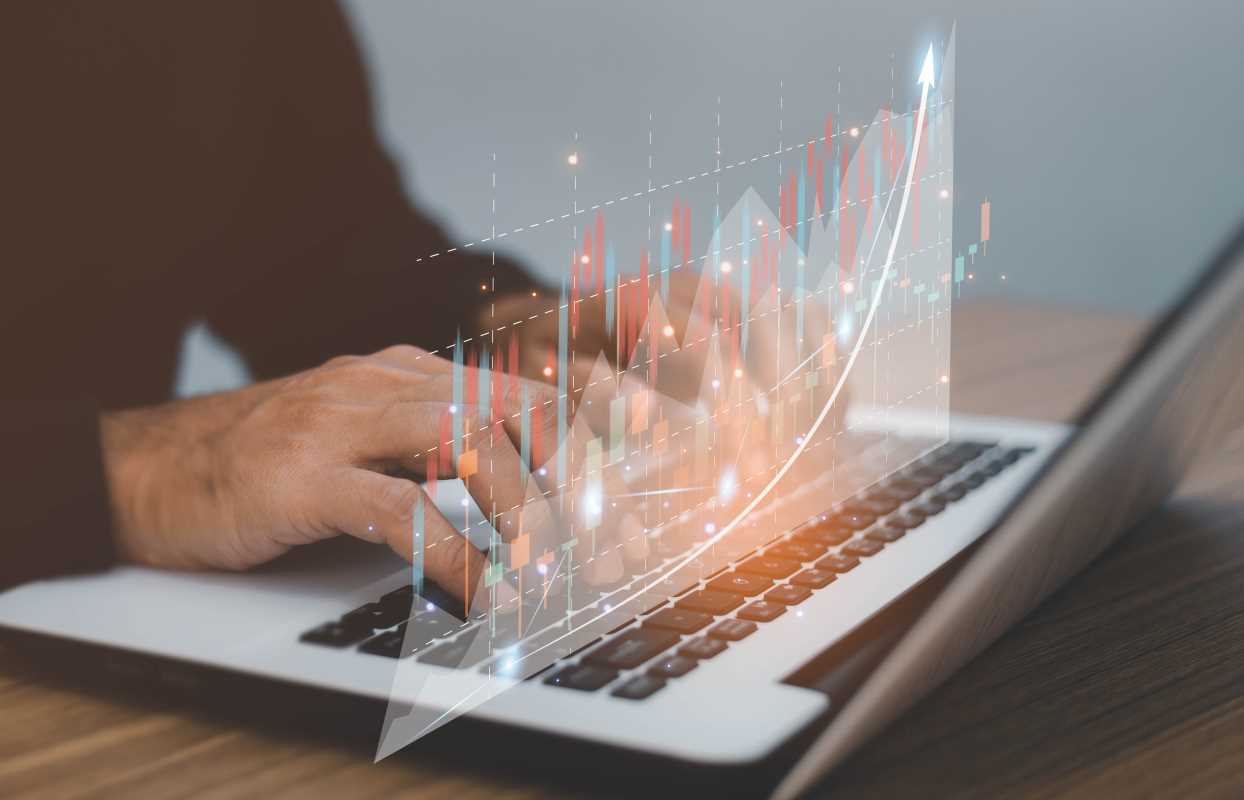For years, managing personal finances and planning for the future involved a lot of guesswork. You might have created a budget in a spreadsheet, set a savings goal, and hoped for the best, making adjustments as unexpected expenses popped up. While this method is better than nothing, it's often reactive and imprecise. What if you had a tool that could act like a financial crystal ball, analyzing your habits to predict your future bank balance and showing you the potential impact of your decisions before you make them? This is the power of AI-driven financial forecasting, a technology that is taking the guesswork out of personal savings and empowering people to build wealth with more confidence and clarity than ever before.
What Is AI-Driven Financial Forecasting?
At its heart, AI-driven financial forecasting is the use of artificial intelligence to analyze your financial data and make intelligent predictions about your future financial health. Think of it as a super-smart financial assistant that lives in an app on your phone. This AI connects to your bank accounts, credit cards, and investment accounts to get a complete, real-time picture of your finances.
Unlike a simple budgeting app that just categorizes your past spending, an AI forecasting tool looks for patterns and trends in your data. It learns your unique financial rhythm:
- It identifies your regular income, including when you get paid.
- It recognizes your recurring bills, like rent, utilities, and subscriptions, and predicts when they will be due.
- It analyzes your variable spending habits, learning how much you typically spend on groceries, gas, and entertainment each month.
Using this information, the AI runs complex simulations to project your account balances into the future—days, weeks, or even months ahead. It can warn you if you're on track to have a low balance before a big bill is due or show you how much surplus cash you're likely to have at the end of the month, which you can then confidently move into savings.
Beyond Budgeting: The Power of Prediction
Traditional budgeting is like looking in the rearview mirror; it tells you where your money has already gone. AI forecasting is like looking through the windshield with a high-tech navigation system; it shows you the road ahead and helps you avoid potential obstacles. This predictive power is what makes it such a game-changer for growing your savings.
One of the key features is cash flow projection. The AI can create a visual timeline of your money, showing you the expected ups and downs of your bank account. This is incredibly helpful for managing irregular income or planning for large, infrequent expenses. For example, if you're a freelancer with fluctuating paychecks, the AI can help you see if you'll have enough cash to cover your bills during a slow month. If you know you have a big car insurance payment due in six months, the AI can show you how your current spending habits will impact your ability to pay it, prompting you to start saving for it now.
This foresight eliminates financial anxiety. Instead of worrying if you'll have enough money, you have a clear, data-driven forecast. This confidence allows you to be more proactive and strategic with your savings.
How AI Helps You Save More, Smarter
An AI-powered financial tool doesn't just show you the future; it helps you change it for the better. These platforms are designed to actively help you identify opportunities to save and grow your money.
One way they do this is through "smart savings" suggestions. The AI analyzes your spending and identifies areas where you can cut back without making a major lifestyle change. It might notice you're spending more than average on subscriptions and suggest canceling a few you don't use often. It could also analyze your bills and identify opportunities to negotiate a better rate with your service providers.
More advanced platforms offer automated savings features. The AI can monitor your checking account and, when it identifies surplus cash that you don't need for upcoming bills, it can automatically transfer small amounts into a separate savings account. This "set it and forget it" approach helps you save consistently without even thinking about it. These small, frequent transfers can add up to a significant amount over time.
Furthermore, AI can help you with goal setting. You can tell the app you want to save for a down payment on a house, a vacation, or a new car. The AI will then work backward from your goal. It will calculate how much you need to save each month and show you the impact of different saving strategies. It can run scenarios like, "What if I cut my dining-out budget by $100 a month? How much faster will I reach my goal?" This turns an intimidating long-term goal into a series of small, manageable steps.
Real-World Examples of AI in Action
The application of this technology is already here and becoming more common in modern finance apps.
- Low Balance Alerts: An AI tool can send you a notification that says, "Your account is projected to be low in five days, just before your rent payment is due." This gives you time to transfer money or adjust your spending.
- Investment Forecasting: In the world of investing, AI algorithms can analyze market trends and economic data to project the potential growth of your investment portfolio. A robo-advisor might show you a range of possible outcomes for your retirement savings based on different levels of risk, helping you choose a strategy that aligns with your comfort level.
- Debt Repayment Strategy: If you have credit card debt, an AI tool can analyze your balances and interest rates to create the most efficient payoff plan. It can show you how much money and time you'll save by using the "avalanche" (paying off the highest interest rate first) or "snowball" (paying off the smallest balance first) method.
Is It Safe and What's the Catch?
Whenever you're dealing with sensitive financial data, security is a top concern. Reputable financial apps that use AI employ bank-level security measures, such as encryption, to protect your information. They typically have "read-only" access to your accounts, meaning the app can see your balances and transactions but cannot move money without your explicit permission for a specific feature, like automated savings. It's always important to do your research, choose well-known apps, and use strong, unique passwords.
The "catch," if there is one, is that the tool is only as good as the data it has. You need to connect all of your financial accounts to give the AI a complete picture. If you leave out a credit card or a bank account where you do a lot of spending, the forecast won't be accurate.
 (Image via
(Image via





